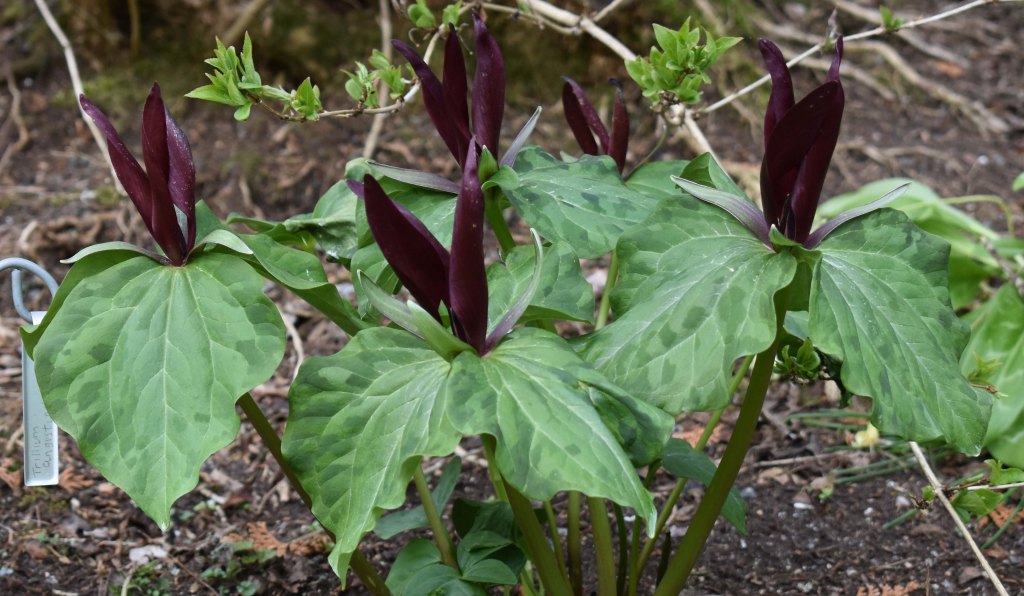
I have never thought too much about trilliums apart from the fact that they are beautiful; actually I don’t think I had ever seen them before I came to Crathes. Recently there have been new trilliums appearing in the garden so this year seems a good time to find out more. Tri for three: three petals, three sepals, three large leafy bracts; so easy to recognise. There are over 40 species of trilliums in North America and five or six in Eastern Asia. They are divided into two groups: pedicellate, with a flower stalk between the three bracts and the flower, and sessile without the flower stalk. This makes them a little easier to identify. The sessile ones only occur in North America, often in woods. It must be very special to see them in their native habits. Some cover the woodland floor with their glory, but their habitat is much reduced.
I have a book on trilliums that I got second hand and just put on the shelves for future use.* It’s a good book with a key and lots of fine photographs, and now its time has come. I’ve been poring over it but have realised that ultimately I need to rely on the labels for identification.

I thought I was sure of Trillium albidum on the Double Shrub Border, but then I looked at the one I photographed last month by the Doocot and it seems to key out as T. albidum as well, but the two don’t look the same. Hey ho. But the dark maroon one on the Double Shrub Border has a label – T. angustipetalum, and it matches the photograph (see top). I get into a muddle with others; the labels don’t seem to match the photographs. However, there is a newly planted trillium in the Evolution Garden with label Trillium recurvatum and it matches the photographs perfectly: sessile, recurved leaves/bracts that have a petiole (leaf stalk). Two down at least – many more to go.
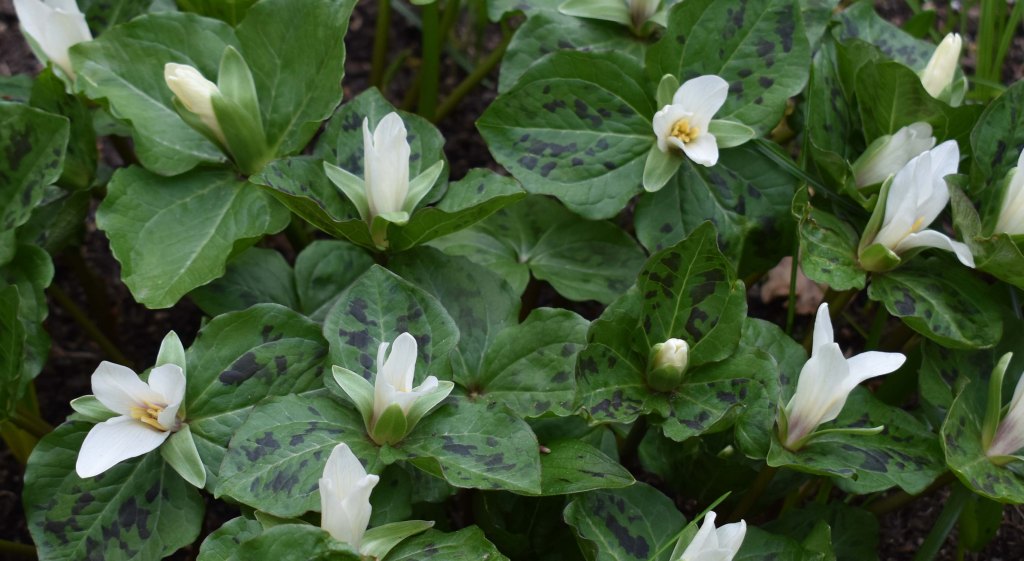
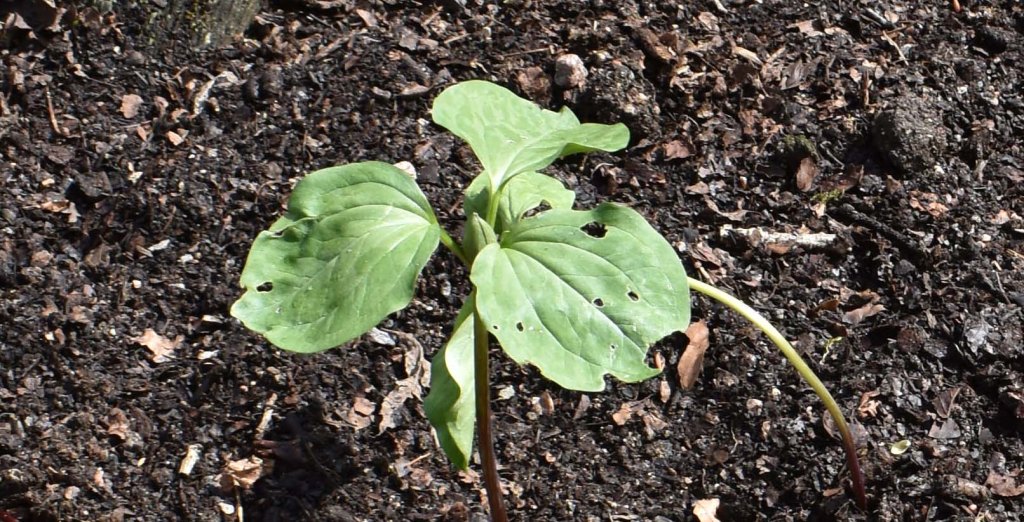
Finally, the geans – native cherries – are coming out on lower Deeside. And it’s official: April 2021 was the frostiest April on record. Aboyne, which is eight miles from Crathes, had 25 nights with below freezing temperatures. The blossom is not only late, in some cases it is less floriferous than last year. The Prunus incisa moerhemii never did get many flowers, but those near the East Lodge are lovely.
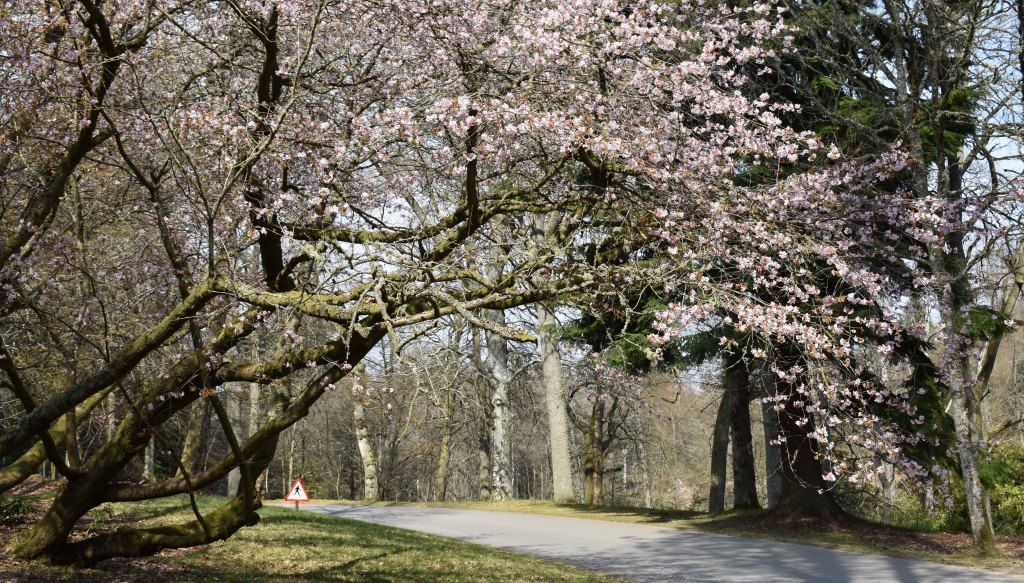
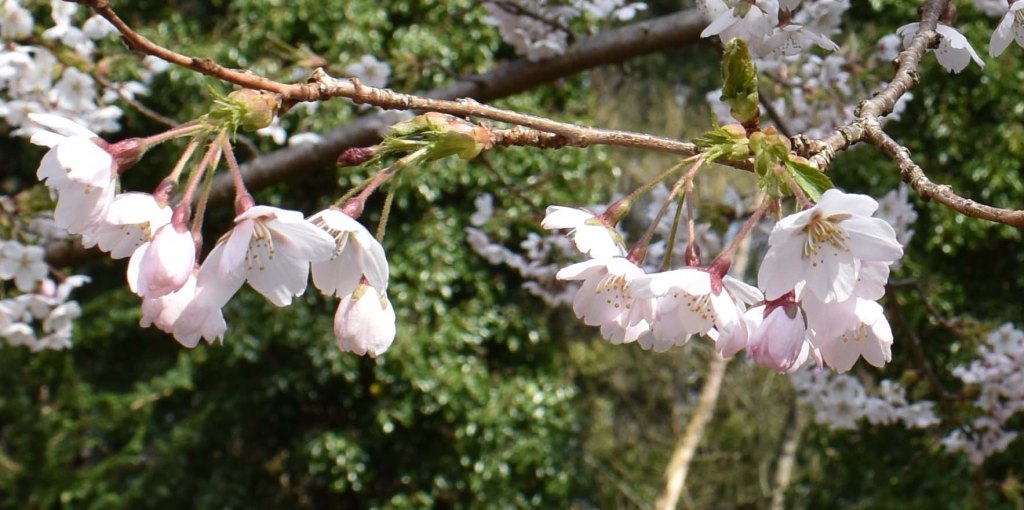
Further up the East Drive a ancient rhododendron is looking fine. It flowers a little later than the Rhododendron calophytum and has escaped the really hard frosts.
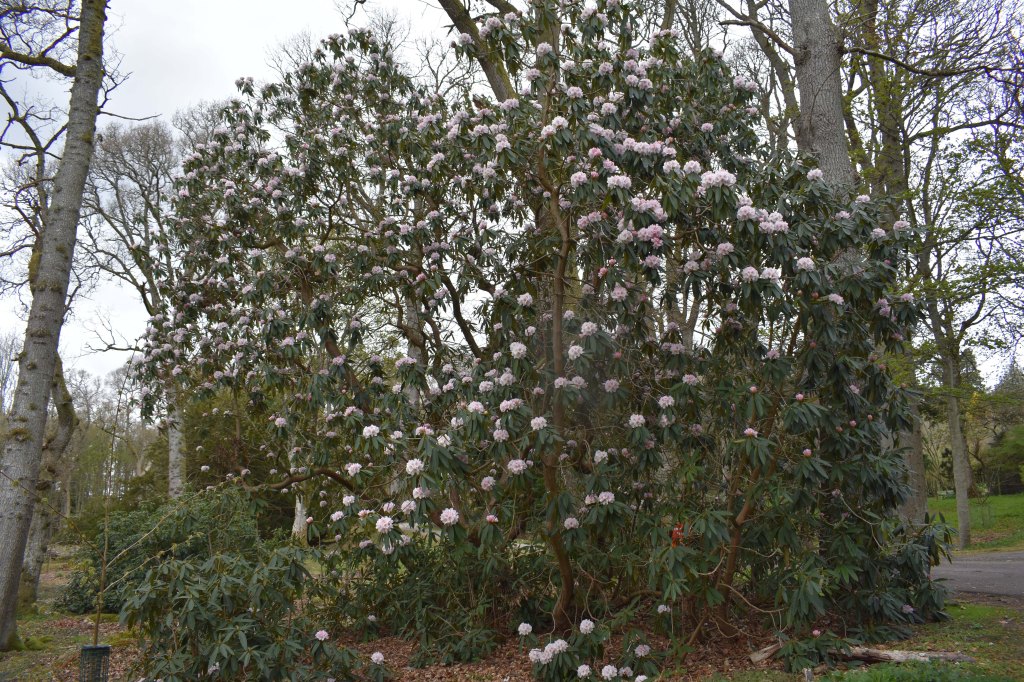
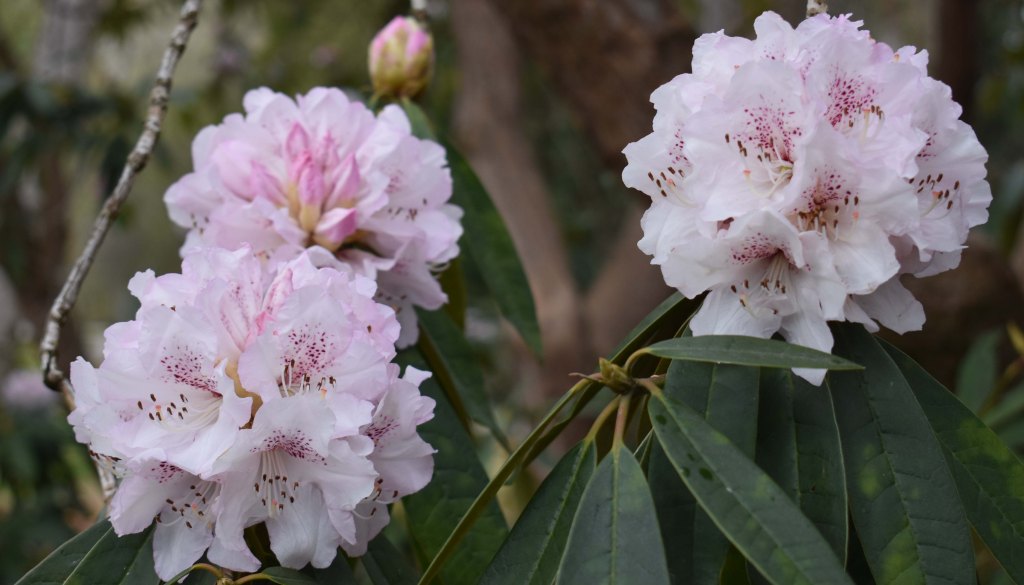
When I arrive on 28th April there is trailer full of yew branches at the East Gate and I know that the yew hedge project has begun. The large branches have already been chipped; the smaller branches are destined for the bonfire. The yew borders have been overshadowed by the hedges and the paths have been getting narrower by the year. The eastern side of the hedges were cut in 2006 and now the western side is being cut back hard. James wields the chain saw and he and Andy deliberate on which branches to cut. It’s more complex than it sounds because the branches are not regular – they twist and turn in unexpected fashion. There is also the problem of the gaps on the eastern side which never re-sprouted at the base after the previous cut. I gather that there will be some infilling with young plants. James and Andy wear hard hats and face shields to prevent damage from falling branches and to protect themselves from the stour of the disturbed yew. The team then need to remove all the branches.
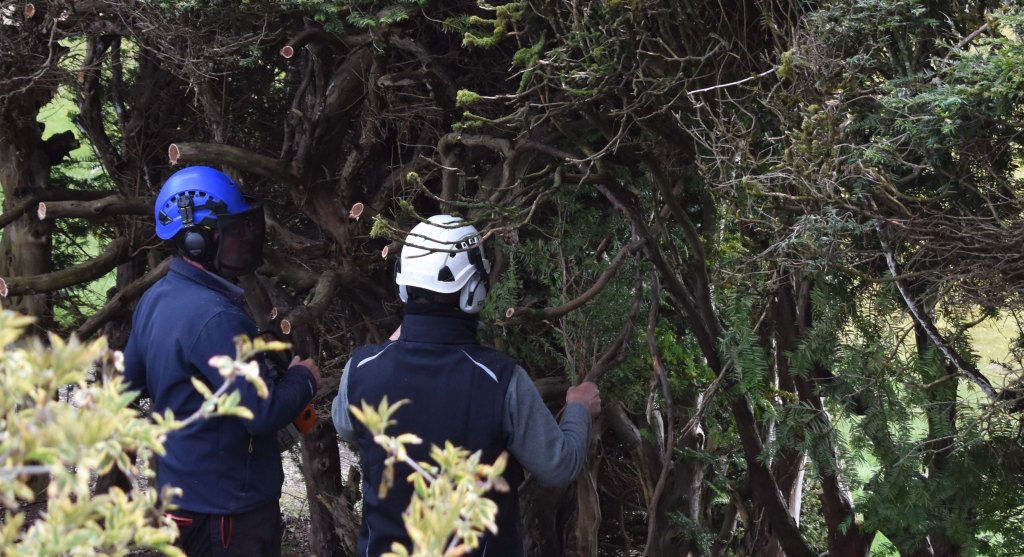
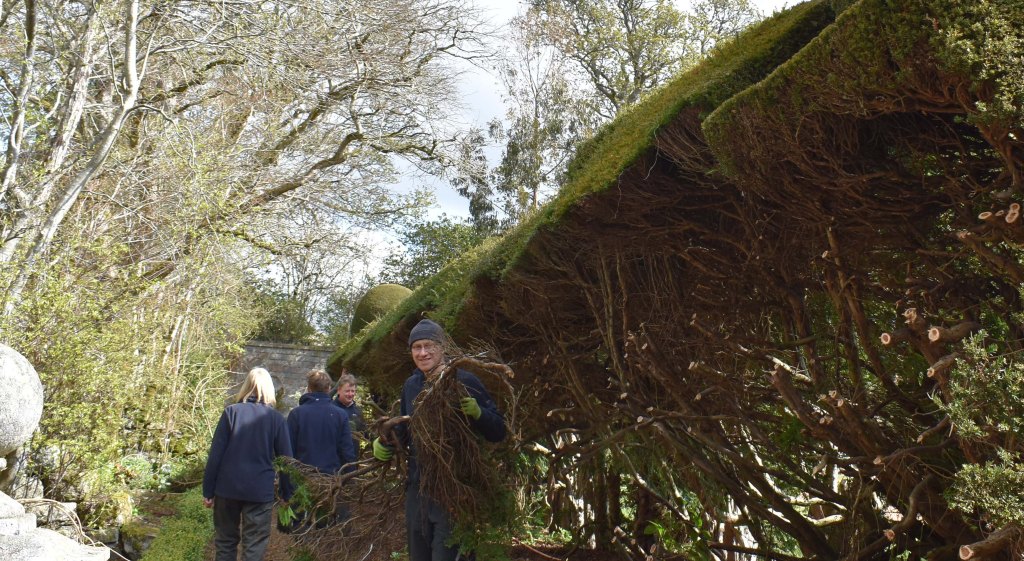
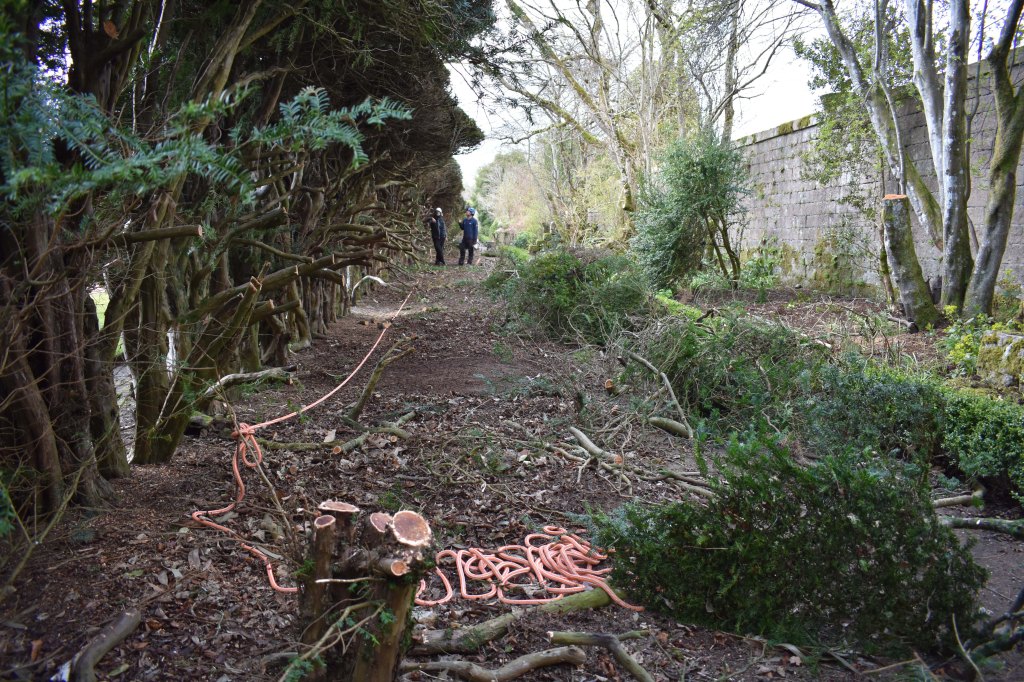
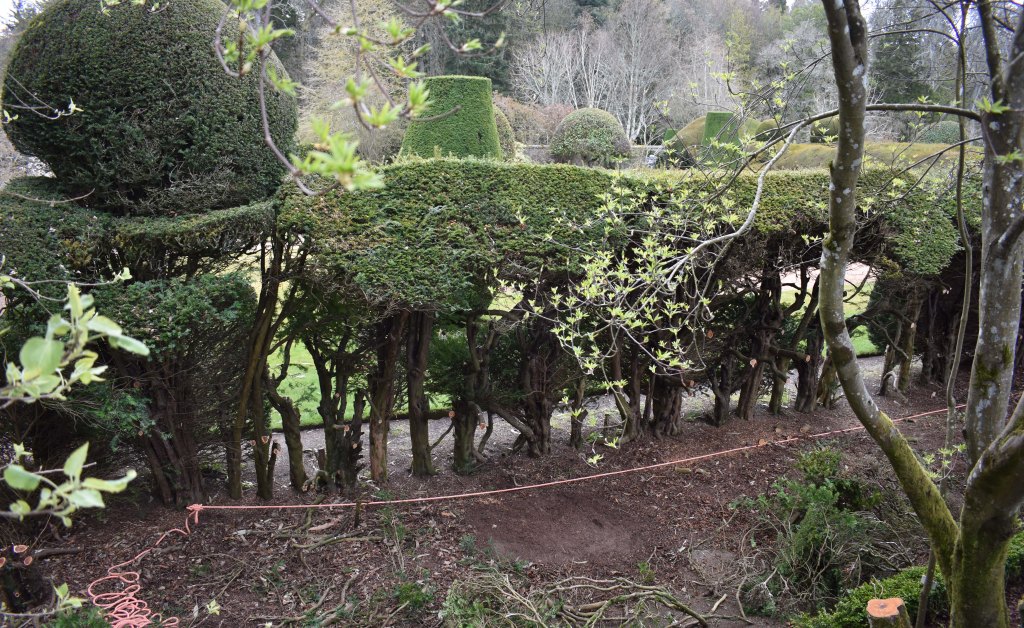
The exercise is not quite so shocking as previous cuttings because much of it is hidden from view in the main gardens, but the gaps seen from the Fountain Garden are now really pronounced. When they have finished, the gardeners will mulch what is left.
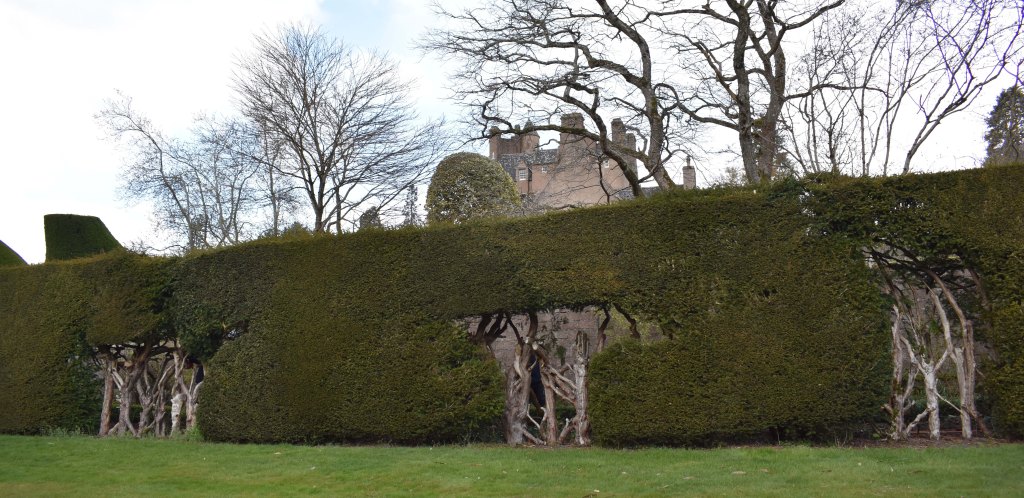

Weeding continues to be a priority. The Rose Garden east border gets the treatment from Cecilia and volunteers Janice and Sheila. As soon as they move on Steve and Tim are waiting to barrow on the compost – it’s Crathes compost, beautiful and crumbly.
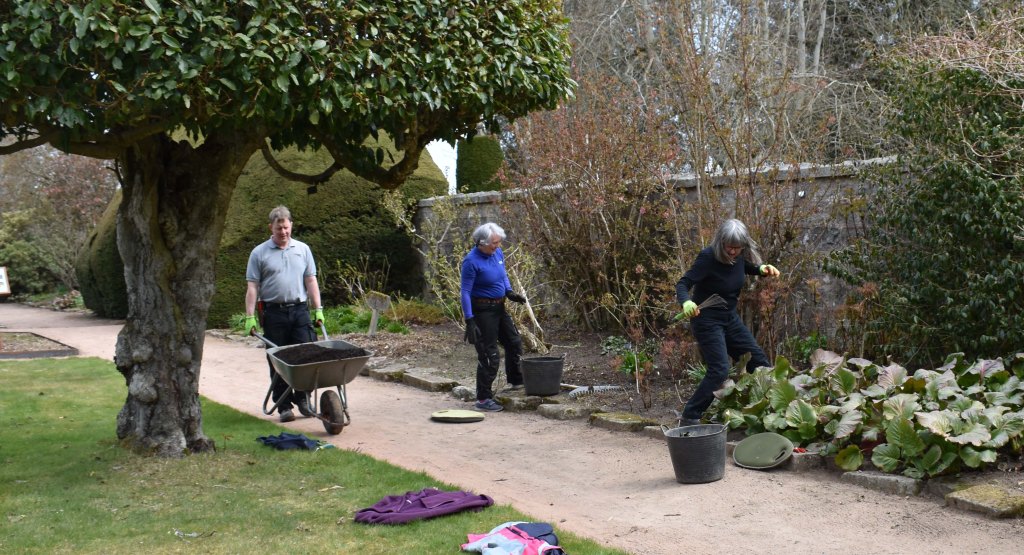
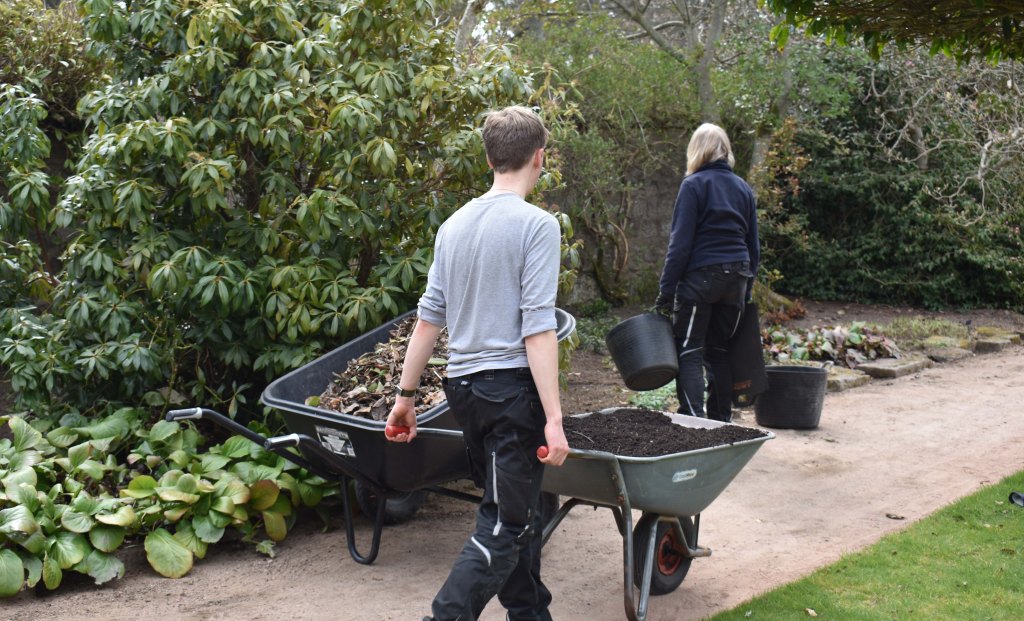
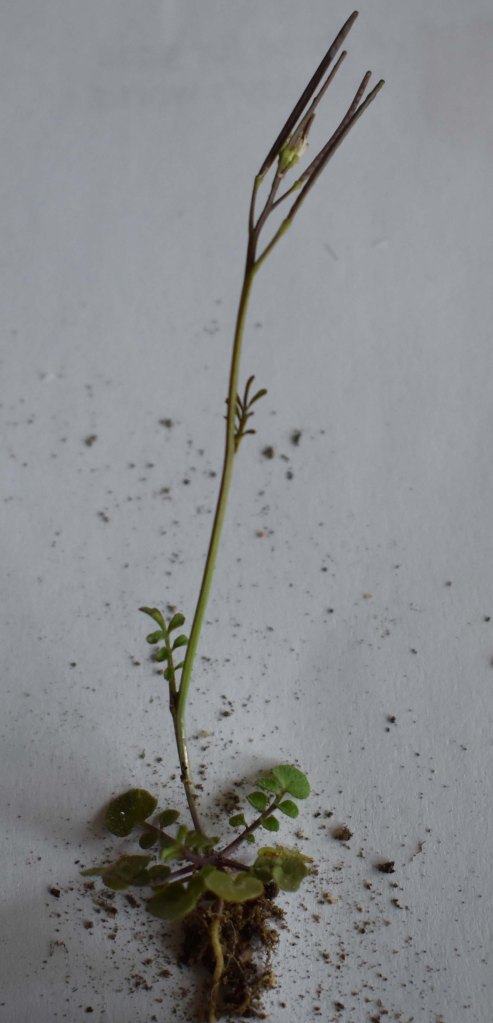
A week later Cecilia and Sandra (volunteer) are weeding in the Double Herbaceous Border. We discuss a tiny weed. Cecilia is adamant it is not hairy bittercress and we resolve to check it out. It turns out to be the closely related thale cress, Arabidopsis thaliana, common on disturbed land. The leaves of the basal rosette are entire and without the leaflets of the hairy bittercress, Cardamine hirsuta. Interestingly the thale cress is important in the study of genetics, its genome being known since 2000. It is the plant equivalent of the fruit fly drosophila, with a short and prolific life cycle. It might be important in the bigger picture, but it is a complete pest for Cecilia and Sandra as every tiny plant has to be hand picked, and there are thousands.
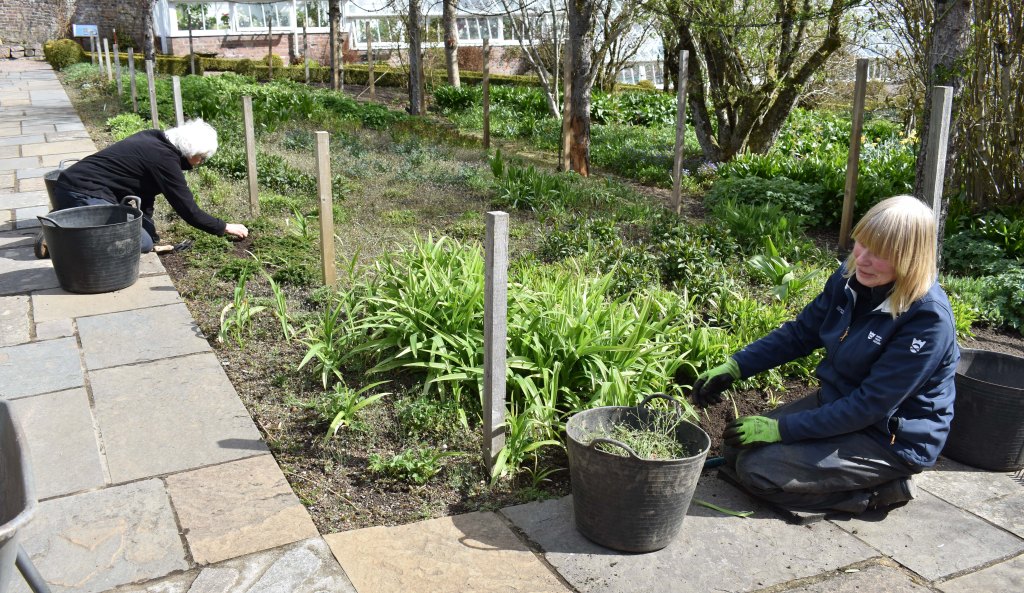
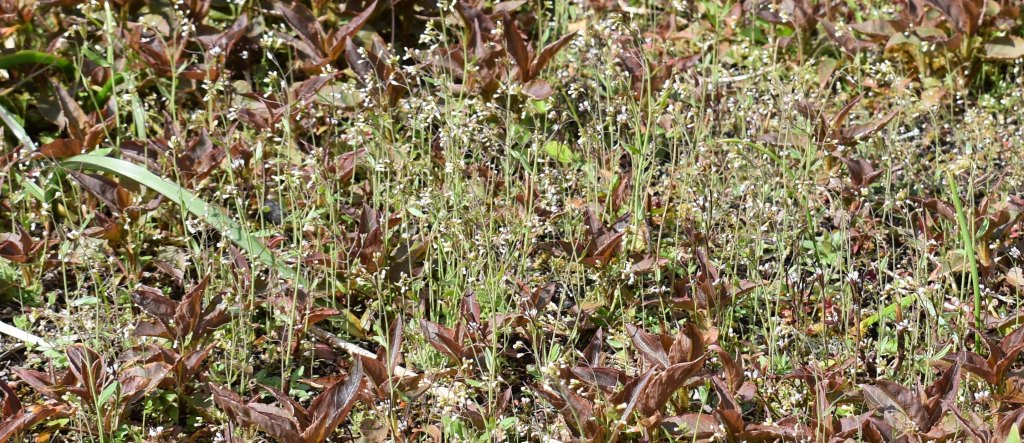
In the glasshouses I am seduced by Amaryllis ‘Grand Diva’. Voluptuous seems a good way to describe it. The dark red colour looks so good in front of the bottle brush, Callistemon citrinus.
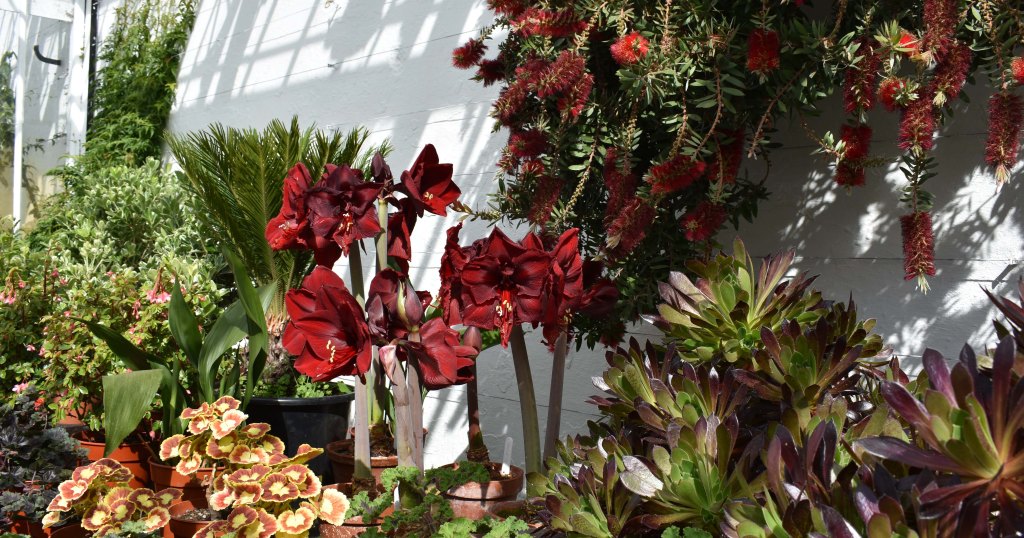
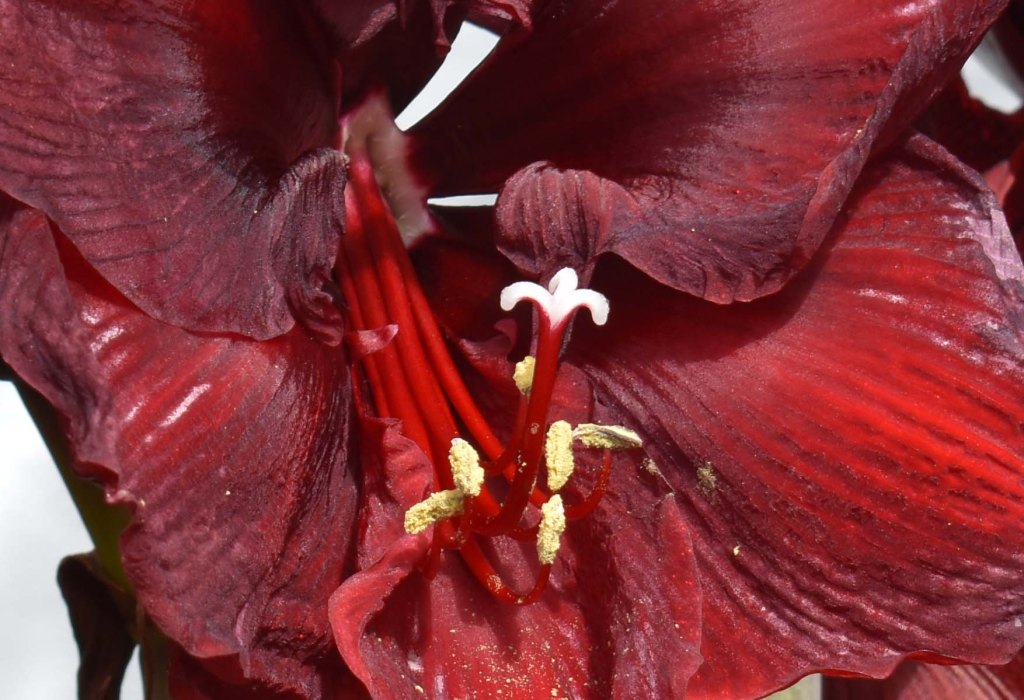
The lovely nodding white Narcissus ‘Petrel’ is now at its best. Joanna has used hazel twigs for support. She doesn’t mind the bamboo canes – it just the plastic tops needed to protect gardener’s eyes that offend. Still, she’s not sure about the hazel twigs.
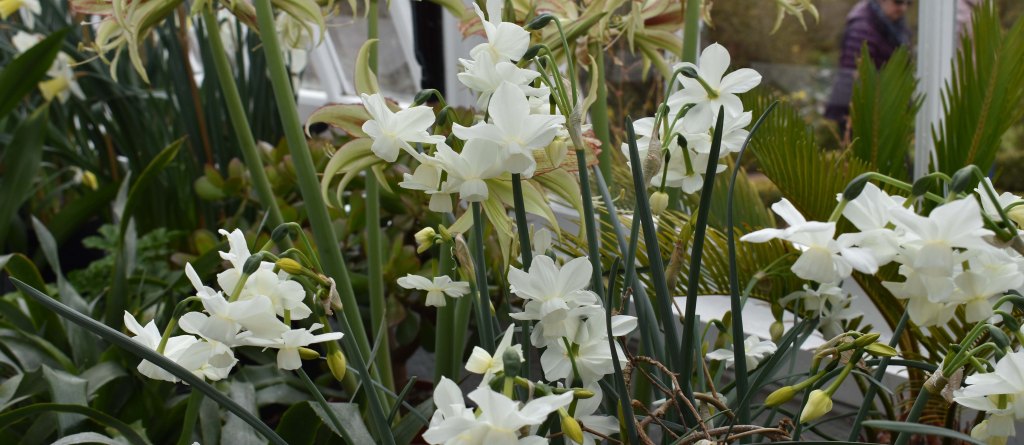
Evidence of coming pleasures is everywhere in the other houses: seeds of various helianthus germinating, cosmos, plugs of rudbeckia, nicotiniana, to mention a few. The tree ferns are also developing. I couldn’t see with the naked eye but when I zoomed in on the camera I could see the tiny prothallus with its sporophyte just emerging.
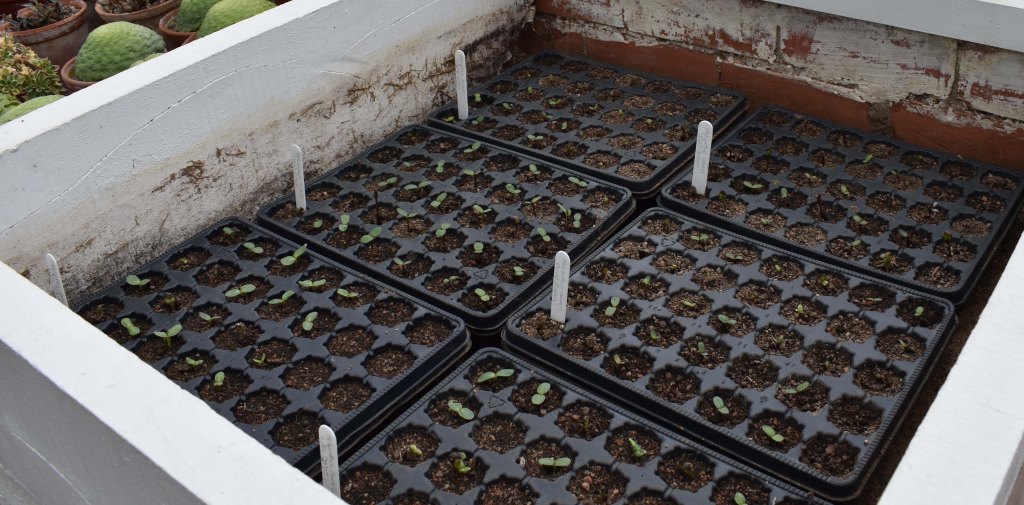

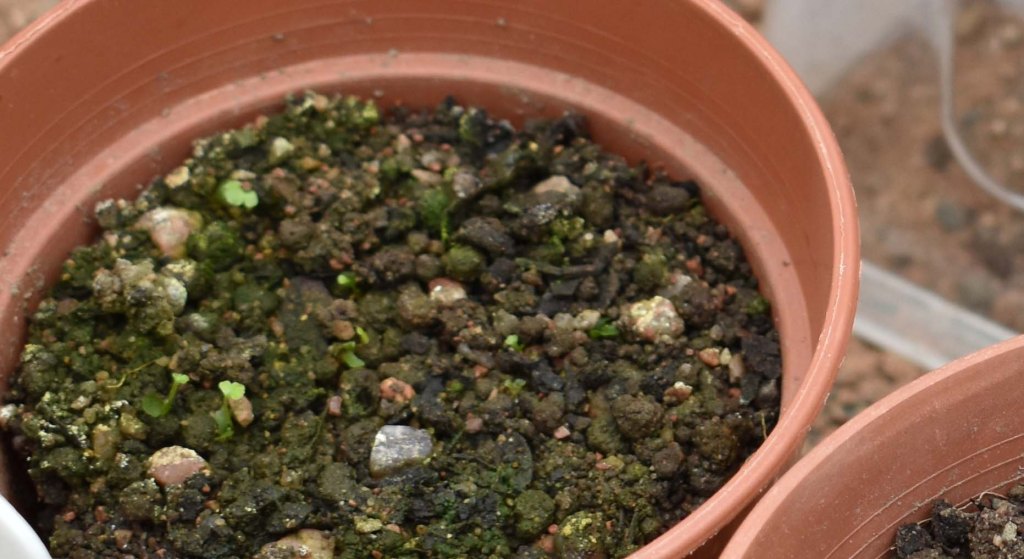
The Evolution Garden is now being planted up. The Pinus strobus ‘Minuta’, previously mentioned, and a similar dwarf pine, Pinus strobus ‘Bergman’s Mini’, are now in place, as is another unnamed conifer. I will be getting more information about the Evolution Garden in due course.


The yellow tulips are now out in the Golden Garden. The deep yellow is Tulipa candela; the paler one I don’t know. This is their second year of flowering.
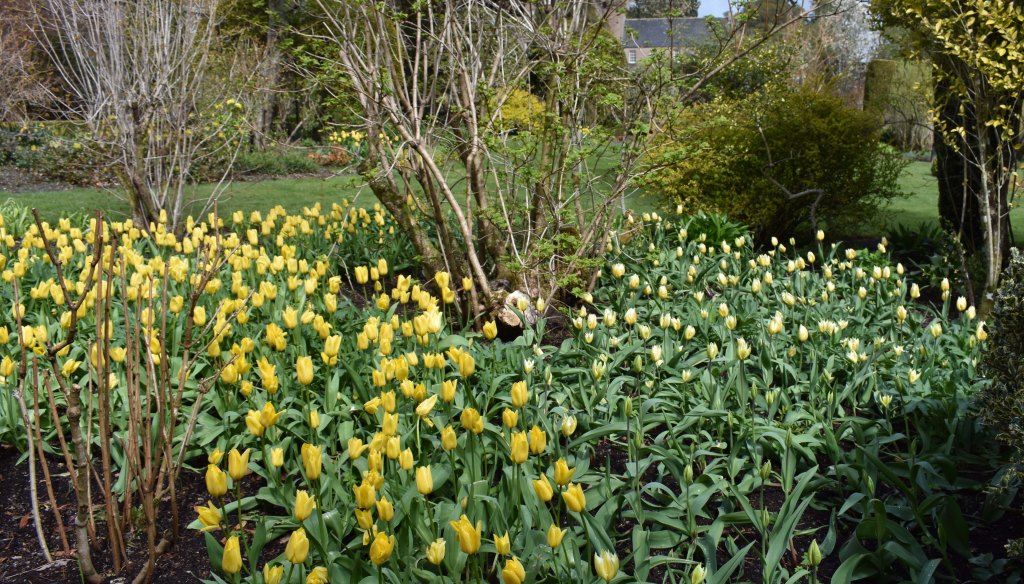
In the Woodland Garden I look for tadpoles. I can’t see any, but I do see a great diving beetle coming up for air, which it stores under its wing cases. It is a fearsome predator about 3cm long. Its presence shows that the pond has plenty of life; this beetle will certainly have been feasting on any tadpoles it can find. If it runs out of prey it will fly away to find another pond.
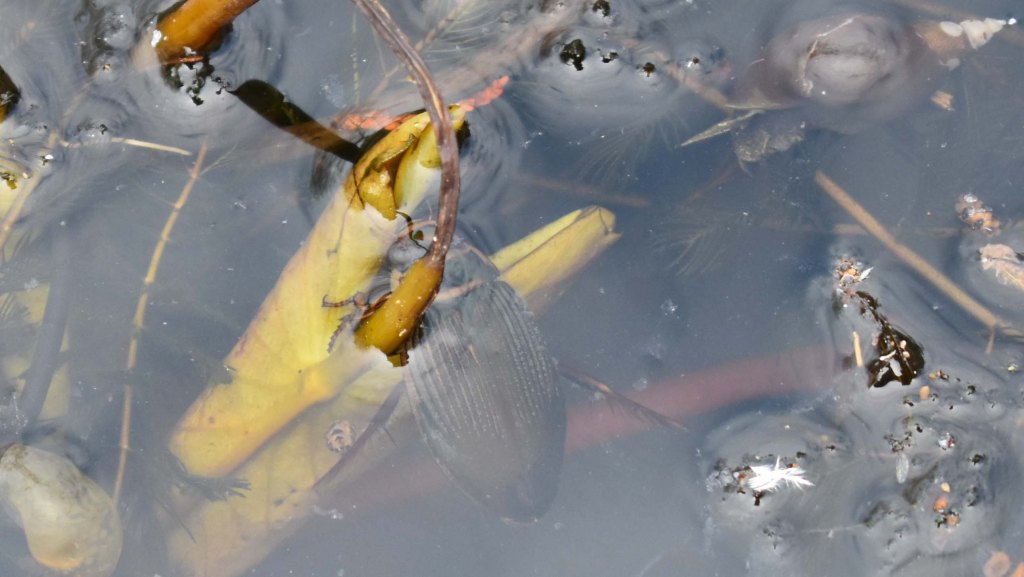

By the Woodland Garden gate I am surprised to see Hepatica x media ‘Millstream Merlin’ still looking good five weeks after I first photographed it – one advantage of the cold weather I suppose.
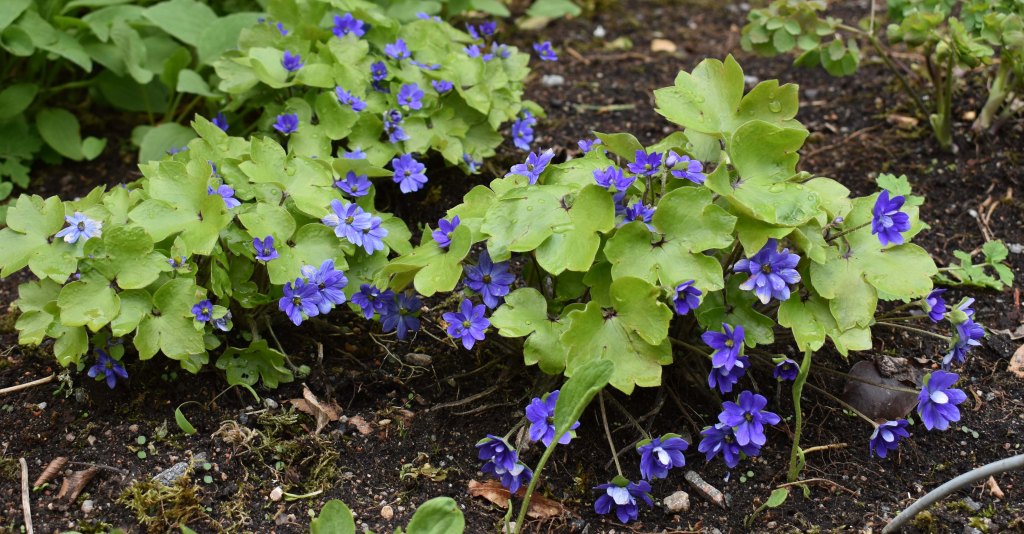
It may be May, but it’s still really cold here in Deeside. We have had a little rain; surely we are due some summer warmth in which to do our outside entertaining.
Take care
*Case, Frederick W Jr and Case, Roberta B, Trilliums (Timber Press Oregon 1997)
It has been a somewhat odd Spring here in North Carolina, too, but not quite so cold as in Deeside! (I heard there was hail yesterday!) Love the trilliums… 🙂 Thanks, Susan! Mara
LikeLiked by 1 person
Thanks Mara. There was frost again last night. Help me out with any trilliums you know!
LikeLike
Thank you again for an interesting tour. Whilst the maroon trillium is flourishing, I thought we’d lost our white trilliums but they have just burst into life again! They originated as one split plant from H. Dyce many years ago and I split it again a few years back, so are very special!
LikeLiked by 1 person
So pleased to hear that your trilliums survived Jenny. I have very fond memories of Hamish.
LikeLike